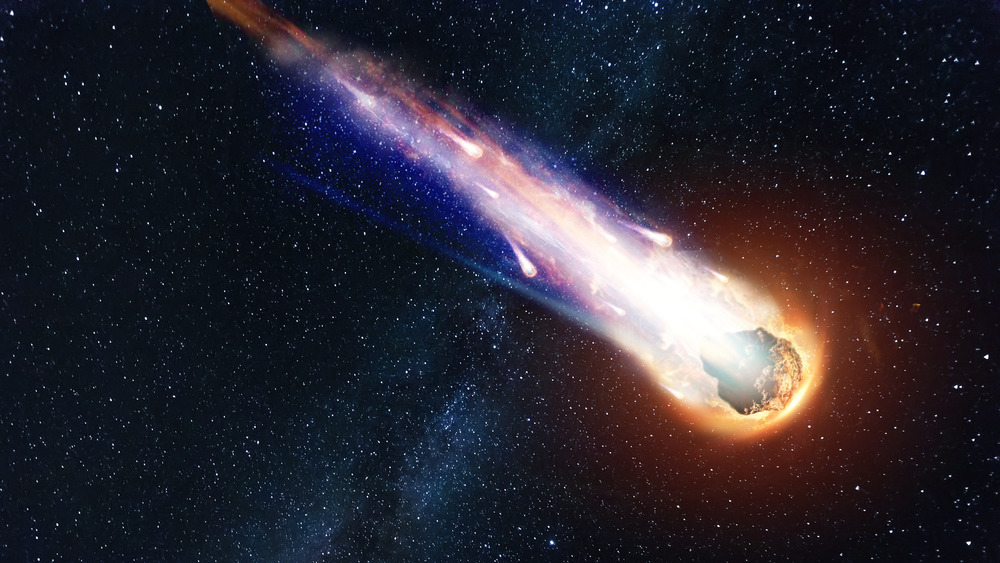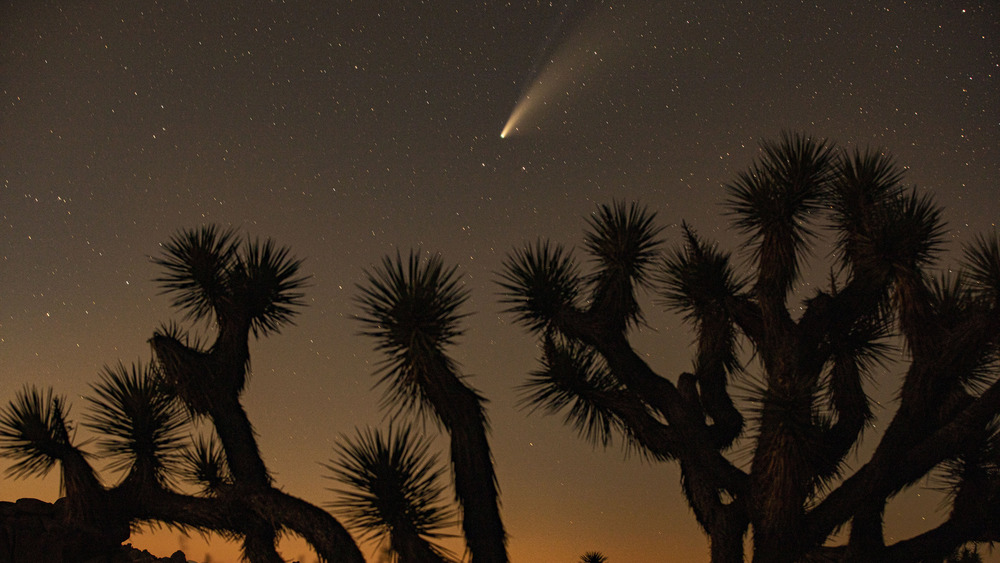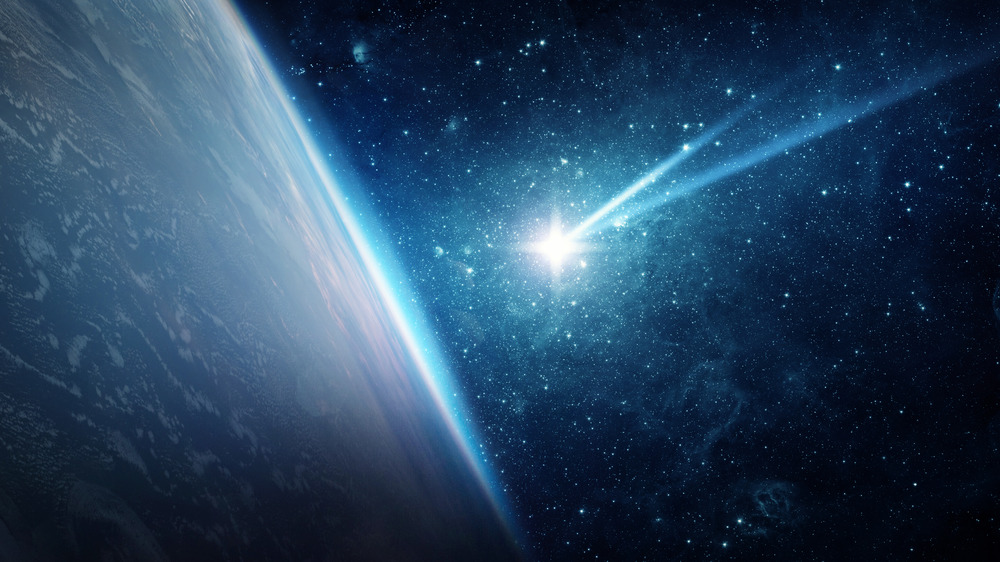How Do Comets Form?
When ancient astronomers first stared up into the night sky, they likely saw heavenly bodies streaming across. These rapidly speeding stars were likely comets with their characteristic tail streaking the sky.
Comets are often mistaken for meteors and asteroids, but, as explained by Scientific American, they're not at all the same. Both comets and asteroids are made of leftover material from the formation of the solar system. However, while asteroids and comets formed around the same time, asteroids are mostly metal since they come into being in the galaxy's inner regions.
Comets, on the other hand, are colder and mostly ice. Comets began farther from the sun, beyond what scientists call the frost and snow line. At such great distances, temperatures are low enough to freeze water. According to Space, scientists call comets snowy dirtballs because comets contain not just ice but also carbon dioxide, ammonia, methane, and possibly more.
Meteors can come from either asteroids or comets. They are celestial bodies that enter the Earth's atmosphere but begin to burn while landing. When chunks of comets melt, we usually see these as a meteor shower.
The distinctive tail, which helps differentiate comets from asteroids and meteors, happens because as the comet moves through space and orbits around the sun, its temperature increases. Some of its frozen material begins to melt around it. The dust and gasses it spews out on its tail can stretch for millions of miles.
But how do these dirty snowballs form in the first place?
Comets come from deep in outer space
NASA scientists believe comets began to form 4.5 billion years ago. From a cloud of debris surrounding newborn stars, away from a sun's heat, rocks and debris start to clump together, attracted by gravity. These clumps collect other frozen dust and debris to fuse and form the large rocks we know as comets today. As the giant icy rock orbits the sun, it often passes through the inner solar system and begins to melt. It's then that the comet's tail starts to form with the rock as its core or nucleus.
There's some debate as to where comets may have originated, wrote Space. It's likely comets come from the Kuiper Belt near Neptune, though it's possible other comets were also from the Oort Cloud, which lies even further. Comets from the Oort Cloud are called long-period comets because of their vast orbits. Whether short-period or long-period, comets all start the same way, as clumps of ice and other material fused together.
Scientists think there are billions of comets orbiting the sun, however, they've only named around 3,697 comets. This includes one of the most famous comets known to man, Halley's Comet. Since they believe some comets originated in the Oort Cloud, it may take hundreds if not thousands of years before these comets come near Earth to be studied. Researchers think comets can hold secrets to how the universe was made, so there have been several studies around them.
We're just learning about comets
Humans have been fascinated by comets for millennia. At first, people believed comets to be a bad omen, a harbinger of death and devastation. Space wrote the Roman emperor Nero had his successors killed to save himself from "the curse of the comet."
Isaac Newton determined comets moved in an elliptical orbit and correctly deduced that they often come back. Chinese astronomers even recorded sightings of what we now call Halley's Comet.
In 2005, NASA's Deep Impact mission purposely collided with the comet Tempel 1 to study the comet's nucleus and hopefully gather some stardust. Years later, they revealed that comets contained some building blocks of life. This is why scientists believe comets may have brought water to the inner region planets like Earth, thus allowing life to flourish.
Studies on comets continue to this day. The European Space Agency (ESA) even landed on a comet. The ESA's Rosetta mission followed the comet 67P/Churyumov-Gerasimenko's orbit. The Rosetta spacecraft deployed the probe Philae on November 12, 2014. Among its discoveries were detecting organic material on the comet's surface, a song that it generated, and the possibility that it may have been formed by two comets that collided. Rosetta crash-landed onto the comet in 2016 to end its mission.
Comets have a long history with humans, and we're only now genuinely understanding what they are.


